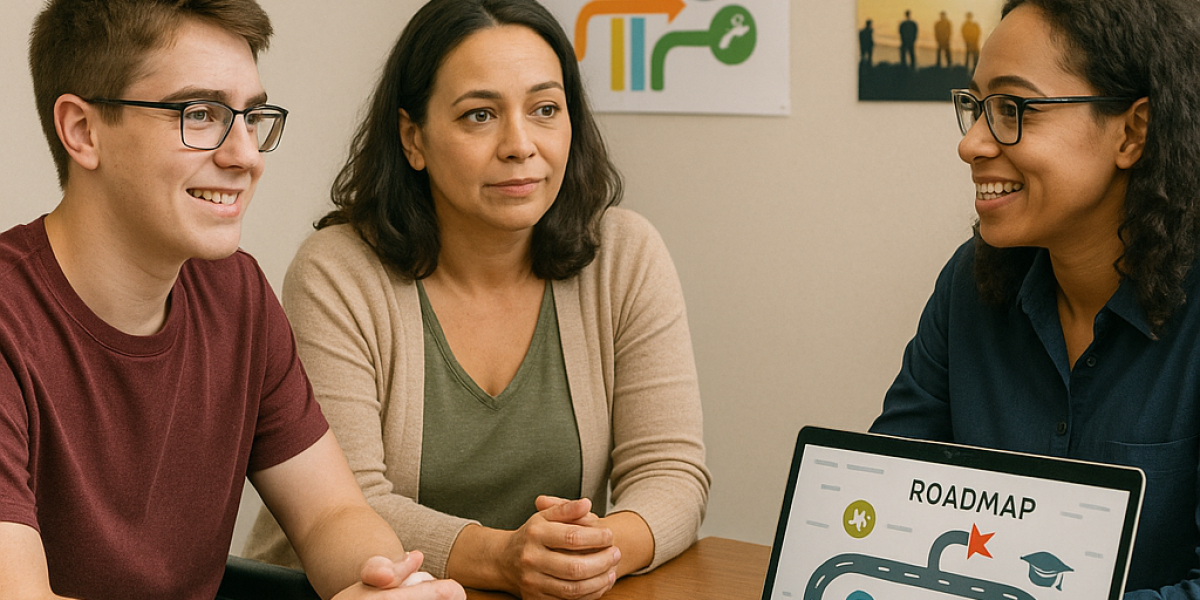Preparing Students for Life After School Requires More Than Paperwork
For special education students, the transition from school to adulthood is a major milestone. It marks the shift from structured academic life to a world that demands independence, adaptability, and self-advocacy. Yet, for students impacted by trauma, this transition can be especially difficult and often overlooked.
Transition planning typically begins by age 14 or 16, depending on the state, and includes goals around employment, education, and independent living. But traditional plans often miss one critical element: emotional readiness. Students who have experienced trauma need more than job skills or college prep. They need emotional support, predictable systems, and trusted adults who understand how their past shapes their path forward.
One way to build a foundation for this support is by understanding how trauma impacts learning in special education. Trauma influences executive function, emotional regulation, and decision-making, all skills essential for navigating life beyond school.
The Emotional Weight of Transition
Leaving the familiar routines of school can be overwhelming for any student, but for those who have experienced trauma, the shift may reignite old fears or insecurities. Changes in schedule, environment, and expectations can trigger anxiety or regression. Even exciting opportunities like job training or college can feel unsafe when stability has been fragile.
Students may react by withdrawing, shutting down, or displaying behaviors that appear oppositional. In reality, they may simply be overwhelmed. Educators and transition teams must recognize these signs not as defiance, but as distress signals.
Building Trauma-Informed Transition Plans
Effective transition planning must go beyond compliance checklists. For trauma-impacted students, plans should include:
- Emotional support goals alongside academic or vocational goals
- Clear, concrete steps for each stage of the transition
- Practice in unfamiliar settings such as job sites, community centers, or college campuses
- Time to develop coping strategies and communication tools
Additionally, incorporating trauma-informed approaches during transition planning ensures that students are not pushed into overwhelming situations without preparation or support. For example, visiting a work site multiple times with a trusted adult before beginning a job can ease anxiety and build confidence.
Consistency and Relationships Matter Most
Students with trauma histories often thrive in relationships that are predictable, supportive, and respectful. As they prepare to exit school systems, it is important that they are not abruptly disconnected from the people who know them best.
When possible, schools should involve familiar staff in the transition process. Guidance counselors, special educators, and paraprofessionals can help create bridges to adult services, community programs, or postsecondary opportunities. Their presence provides emotional stability and reduces the risk of the student feeling abandoned or overwhelmed.
Collaboration With Families and Agencies
Families are key partners in transition planning. They often understand the student’s trauma history and emotional needs better than anyone. Still, many families feel lost when navigating adult services, particularly when trauma has added layers of complexity to the student’s profile.
Educators can support families by:
- Holding early and frequent transition meetings
- Clearly explaining adult service options
- Connecting families to vocational rehab, Medicaid waivers, or community support
- Helping families advocate for services that are both accessible and trauma-informed
When schools work closely with outside agencies, they create continuity. Students benefit from a smoother handoff, and families feel less alone.
Practicing Real-World Skills With Emotional Support
Transition is not just about where a student is going. It is about how they will function once they get there. Trauma-informed practice requires helping students rehearse life skills in supportive environments, not just teaching them theoretically.
Some examples include:
- Role-playing stressful situations such as job interviews or public transit challenges
- Practicing emotional regulation tools such as breathing or scripting
- Building self-advocacy language into alternative communication devices
- Introducing coping mechanisms for environments that may be loud, unpredictable, or overstimulating
By supporting both emotional and practical readiness, educators ensure that students are not only placed in opportunities but are able to stay and succeed in them.
Reframing Success for Trauma-Impacted Learners
For many students with disabilities and trauma histories, the traditional definition of success may not fit. They may need more time, different environments, or support systems that look unique. Schools must broaden their definition of what a successful transition looks like.
Is the student stable and emotionally regulated in their setting? Are they developing confidence in their choices? Have they formed new relationships with supportive adults? These are valid markers of success, even if the path does not follow a straight line.
Conclusion: Transition Is a Process, Not a Destination
Helping trauma-impacted students transition beyond school is not about rushing them toward adulthood. It is about creating an intentional, supportive pathway that respects their history and prepares them for the future. When schools embed trauma-informed strategies into transition planning, they create lasting change, not just for the student, but for the family and the community.
By understanding the emotional layers behind the process, educators and leaders can turn transition from a checklist into a meaningful bridge toward independence, dignity, and hope.












